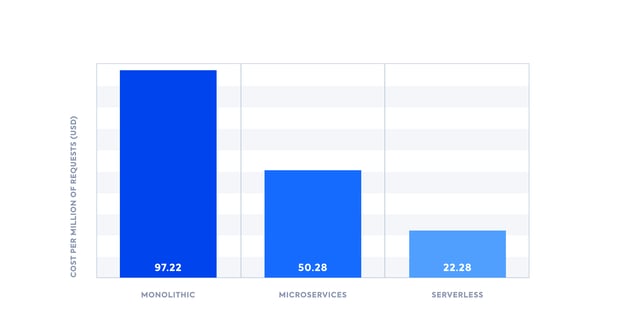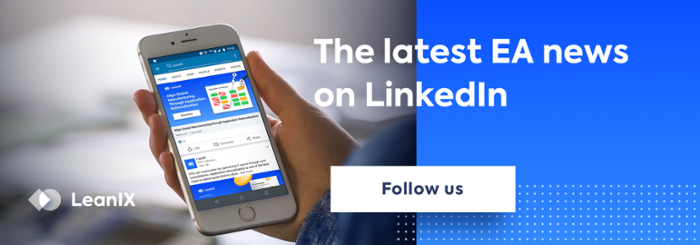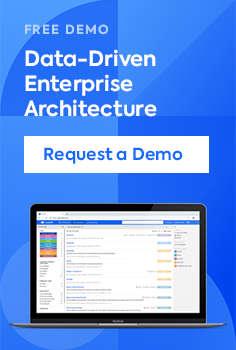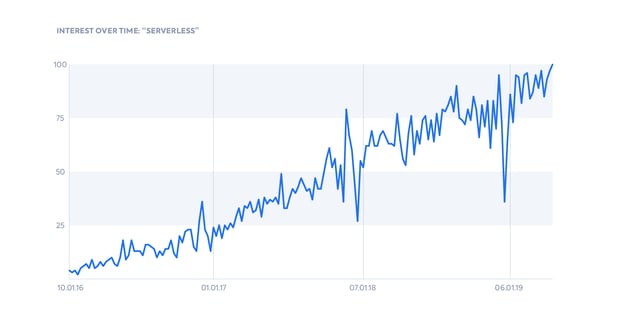
What Enterprise Architects should know
Enterprise Architects won't be surprised to hear that IT ranks as a key enabler of business according to Gartner’s 2019 list of the top trends impacting Infrastructure and Operations. What might surprise them, however, is the item on the list’s top spot: “Serverless Computing”.
Yes, ahead of even “best-of” IT list mainstays like Artificial Intelligence, serverless technology is credited as the biggest thing currently in delivering faster and better business services.
What is "Serverless"?
Gartner describes it as an “emerging” software architectural pattern that eliminates the need for manual, user-led directions when maintaining infrastructures. Categorically known as a “Function-Platform-as-a-Service” (FPaaS), serverless technology is defined by two main characteristics: Rapid Scaling and Highly Granular Billing. While Gartner reports that the technology does not replace containers or Virtual Machines, it can support “utility logic, unpredictable demand and event-driven requirements”.
Serverless computing doesn’t actually mean less servers. Instead, it’s about lessening the need for users to directly manage infrastructures by employing self-running architectures that do the job for them. The concept rests on the idea of independently deployable applications built using functional programming to run, or “orchestrate”, server maintenance—all of which to give developers more time to test new functionalities without laboring over capacity requirements from their underlying operating systems, application servers or software runtime environments.
Where and When is Serverless Used?
The use of serverless technology has skyrocked in the last couple of years at a rate of 700% (PureSec). Even a basic look on Google Trends (below) reveals how dramatically this technology has captured public and corporate interest—especially so after the release of Lambda, Amazon Web Service’s event-driven, serverless computing platform (a move quickly followed by other associated tools like Microsoft’s Azure Function Service).
A Google Trends report showing the worldwide online popularity of the word "serverless" since 2016.
Applications made for serverless architectures are bundled with numerous functions and use a fine-grained deployment model (as shown in the image below) that enables on-demand infrastructure scaling during tasks like, but not limited to, the following:
- Jobs involving continuous streaming of data (e.g., audio and video streaming) and analytics processing programs
- High-volume transactions requiring immediate scaling
- Caring for “burstable” workloads with dynamic and unpredictable traffic volumes (e.g., sales processing for events like Black Friday)
- Controlling data processed between multi-core processors operating in parallel to one another
A visualization depicting the development of serverless computing functionality in comparison to monolithic and microservices architectures. Source: LeanIX GmbH
Benefits of Serverless Computing
The benefits of serverless for enterprises can be grouped into two categories: (1) Maximized resource allocation and (2) Agile product deployment.
1. Maximized resource allocation
In serverless computing, resources are allocated only when a specific event occurs. This means users pay just for the computing power and time they actually use (unlike in Platform-as-a-Service (PaaS) environments where it is reserved, in advance, by payment). The below chart summarizes the differences in infrastructure costs compared to three architecture types and calculated as Costs per Million of Requests (CMR).
 Villamizar, M. (2019). Cost comparison of running web applications in the cloud using monolithic, microservice, and AWS Lambda architectures. [online] Research Gate. Available here.
Villamizar, M. (2019). Cost comparison of running web applications in the cloud using monolithic, microservice, and AWS Lambda architectures. [online] Research Gate. Available here.
2. Agile product deployment
Serverless architecture aids in Agile-friendly product development by utilizing smaller sets of codes that can be altered as and when required without fear of adversely affecting the overall code structure. By placing flexible application designs positioned atop smart infrastructures, software can be developed to different markets and optioned to new users at faster speeds.
Every technological advancement must cohere with ones already established and in use. Serverless computing is, of course, no different. Industries are in a transition period, and the safest way for all parts of an enterprise to keep their IT assets secure and compliant while transforming at breakneck speeds is by anchoring themselves with custom-built IT architecture—the likes of which LeanIX provides via out-of-the-box functionality and dedicated Customer Success Agents paired directly to your business and mission.
Want to see if LeanIX can help you on your way to a serverless future? Click the button below for a free product demo.

LeanIX offers a Software-as-a-Service (SaaS) for Enterprise Architecture (EA) that enables organizations to make faster, data-driven decisions for their IT landscape. More than 150 leading brands worldwide such as Adidas, DHL, Merck, Vodafone, and Zalando use the innovative tool. Users of LeanIX gain insights on how to organize and leverage their IT landscape to increase competitiveness and innovation going forward. LeanIX addresses the common enterprise predicament that information regarding IT landscapes is missing, outdated, or difficult to analyze. LeanIX is headquartered in Bonn, Germany. 

.png?width=620&name=Graphic%201%20(2).png)



